12 min. reading
AI Interior Design Revolution: How Smart Technology is Democratizing Home Design
Juliy Cherevko
CEO paintit.ai

Page Contents:
- 1. Understanding AI-Powered Interior Design
- 2. The Personalization Revolution
- 3. Speed and Efficiency Transformation
- 4. Sustainability Through Smart Design
- 5. Popular AI Design Tools Breakdown
- 6. Real-World Success Stories
- 7. Spotlight: Paint.it AI - Design Like Creating a Playlist
- 8. The Human-AI Collaboration Model
- 9. Overcoming AI Design Limitations
- 10. Getting Started with AI Design
- 11. Future Horizons
- 12. Making the Smart Choice
Have you ever walked into your living room and felt... nothing? That nagging sense that something's missing, but you can't quite put your finger on what? You're not alone in this design dilemma.
For decades, creating a beautiful home meant one of two paths: either spend thousands on a professional designer or wade through endless Pinterest boards, hoping to stumble upon that perfect look. Both options left most of us feeling either broke or overwhelmed.
But something remarkable is happening in the world of interior design. The same technology that revolutionized how we shop, work, and connect is now transforming how we create our living spaces. AI-powered design tools are making professional-quality results accessible to anyone with a smartphone and a vision.
This isn't some distant future scenario-it's happening right now, in homes across the country. What once required years of training, expensive consultations, and countless trial-and-error purchases can now unfold in minutes. We're witnessing the democratization of good design, where beautiful, functional spaces are no longer reserved for those with hefty budgets or design degrees.
The revolution is here. And it's more accessible than you might think.
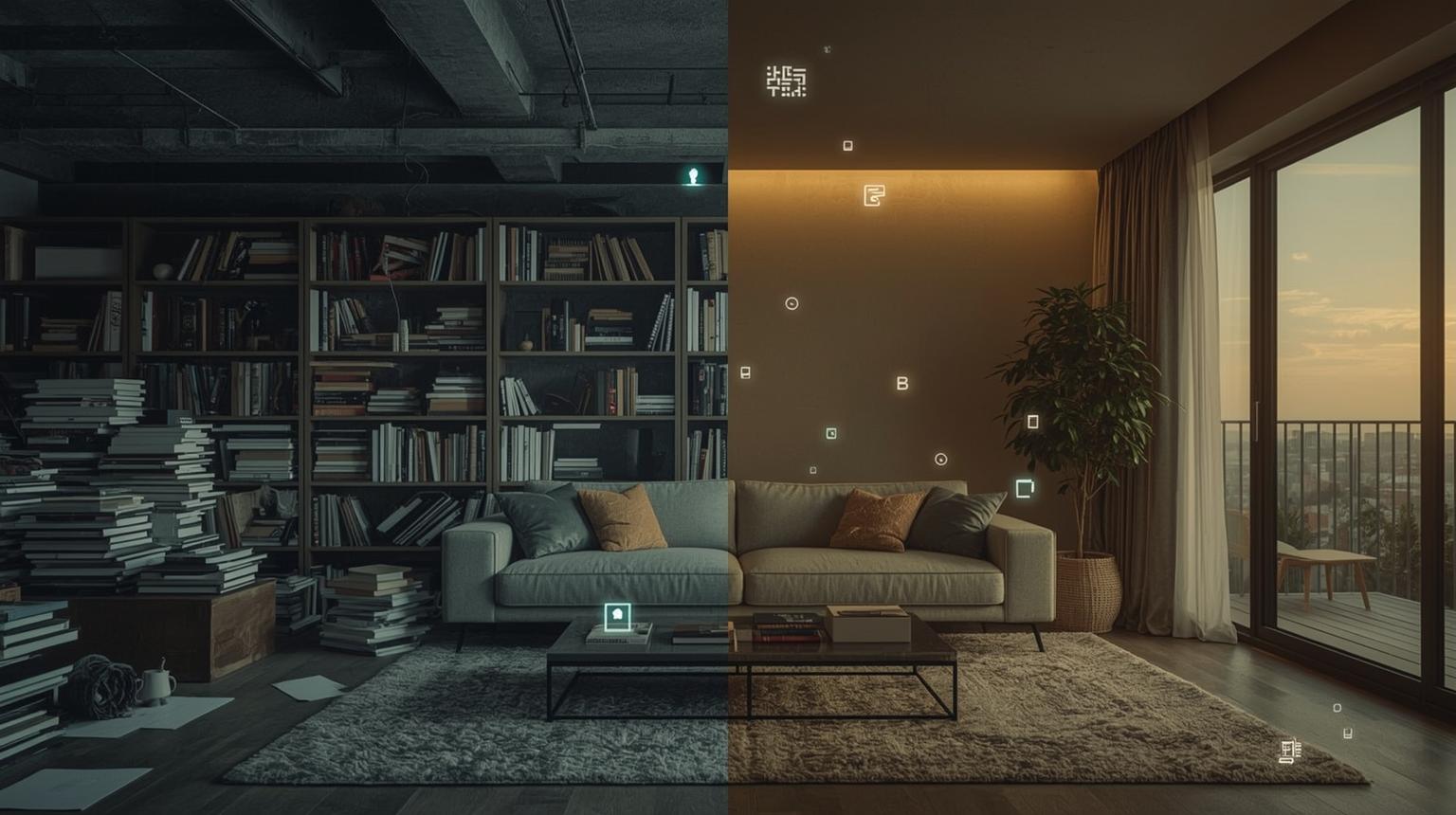
Understanding AI-Powered Interior Design
Forget everything you think you know about robots arranging furniture. AI interior design is something far more sophisticated-and surprisingly intuitive.
How AI Actually Works in Design
Picture this: thousands of beautifully designed rooms, each one teaching an algorithm what makes spaces work. Machine learning doesn't just memorize these patterns-it understands them. When you upload a photo of your bedroom, the AI sees more than furniture placement. It recognizes flow, balance, and harmony in ways that might take human designers years to develop.
Computer vision technology acts like a design-savvy friend looking at your space. It measures dimensions without a tape measure, notices how light falls through your windows, and spots potential you might miss entirely. That awkward corner you've ignored? The AI sees opportunity.
Natural language processing bridges the gap between "I want something cozy" and actual design decisions. Tell an AI you're dreaming of a "warm, book-lover's sanctuary," and it translates your feelings into specific choices: rich wood tones, soft textures, strategic lighting for reading nooks.
But here's where it gets interesting. Generative algorithms can create dozens of layout possibilities in seconds, each one balancing function with beauty. It's like having an entire design team brainstorming while you sip your morning coffee.
When I first experimented with AI design tools, I was skeptical. Could technology really understand what makes a space feel like home? The answer surprised me-and it might surprise you too.
The Personalization Revolution

Remember when "interior design" meant choosing between three generic styles at the furniture store? Those days are fading fast.
Beyond Cookie-Cutter Solutions
AI changes everything by treating you as an individual, not a demographic. When you share your preferences, lifestyle needs, and constraints, the technology doesn't offer generic "modern" solutions. Instead, it creates hybrid approaches that work specifically for your reality.
Think about how differently a young family with toddlers lives compared to empty nesters planning retirement adventures. AI recognizes these distinctions. For the family, it might prioritize washable fabrics, rounded edges, and clever storage that hides toys instantly. For the retirees, it focuses on creating conversation-friendly spaces, ambient lighting for evening gatherings, and display areas for treasured collections.
The learning never stops. Advanced systems remember your choices over time, recognizing subtle preferences you might not even consciously realize. Maybe you gravitate toward warmer color palettes, or perhaps you consistently choose natural materials over synthetic ones. This creates a feedback loop where recommendations become increasingly personal and relevant.
Here's what I find fascinating: traditional design might suggest "add colorful pillows." AI suggests "try two 18-inch pillows in sage green velvet to complement your existing warm wood tones and enhance that reading corner you mentioned wanting to create."
The difference? One treats symptoms, the other understands the underlying desire.
Speed and Efficiency Transformation
Let's be honest-traditional interior design moves at the pace of continental drift. AI? It's more like lightning.
Remember measuring rooms with that flimsy tape measure that always snapped back and whacked your knuckles? AI space planning happens in seconds, considering traffic patterns, natural light, and functional requirements simultaneously. No bruised knuckles required.
Modern AI tools produce photorealistic renders almost instantly. No more squinting at paint swatches under fluorescent store lighting, wondering if "Desert Sand" will look beige or pink in your dining room. AI shows you immediately, from multiple angles, in different lighting conditions.
Want to experiment? Traditional design required new sketches or mood boards for every variation. AI lets you explore endless possibilities in real-time. Wall color not quite right? Different furniture arrangement catching your eye? Each change happens instantly, letting you compare options side by side until something clicks.
And here's a game-changer: AI calculates costs as you design. Budget feeling tight? It suggests similar-looking alternatives or phases implementation over time. No more falling in love with a $3,000 sofa only to discover your budget reality later.
This efficiency isn't just about saving time-it's about removing barriers that traditionally made good design feel impossible for regular people like us.
Sustainability Through Smart Design
Here's something beautiful: AI naturally pushes us toward more sustainable choices. Not through guilt or compromise, but through better information.
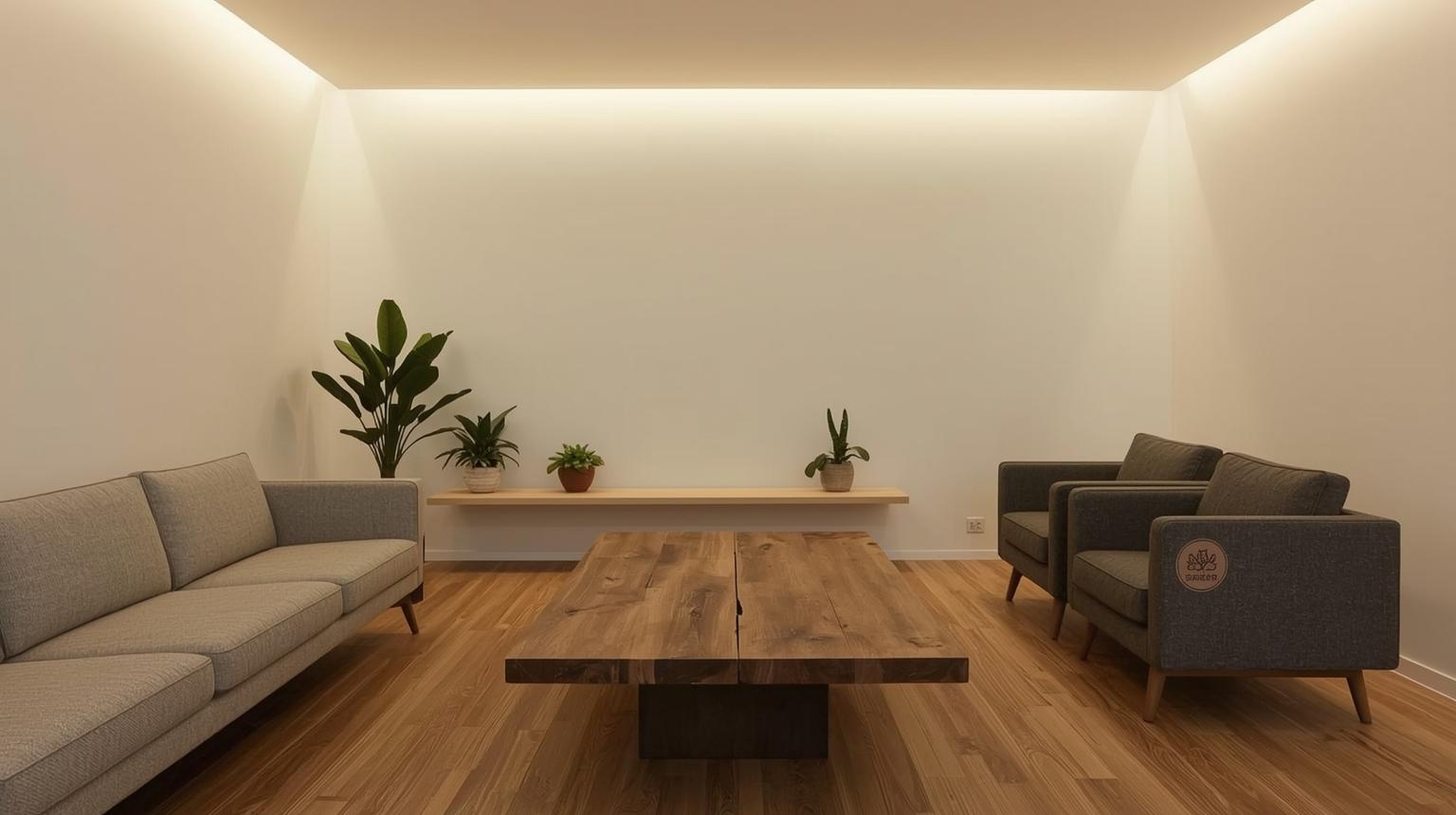
AI as Environmental Guardian
When AI suggests a coffee table, it doesn't just consider aesthetics. Its databases instantly access environmental impact information, recommending reclaimed wood options or furniture made from recycled materials. The sustainability information appears alongside design benefits, making eco-friendly choices feel natural rather than burdensome.
Ever notice how some rooms feel naturally bright while others seem to swallow light? AI analyzes your space for optimal natural light usage, suggesting arrangements that maximize daylight and reduce electricity needs. It considers seasonal sun angles and window placement to create layouts that work with your home's natural rhythms throughout the year.
There's real beauty in precision. Traditional design often involves purchasing items that don't quite work, leading to returns, exchanges, and waste. AI's visualization capabilities dramatically reduce these costly mistakes. When you can see exactly how something will look and fit before buying, waste naturally decreases.
Advanced systems even calculate carbon footprints for design choices, including transportation costs for imported materials and end-of-life disposal considerations. Having this information during the design process enables more conscious decisions without sacrificing beauty.
Popular AI Design Tools Breakdown
The AI design landscape offers something for everyone, from curious beginners to seasoned professionals.
For Beginners
RoomsGPT excels at immediate gratification. Upload your space, describe your dream style, and watch multiple redesign options appear. It's particularly effective for visual learners who need to see possibilities before believing them.
Planner 5D makes 3D room planning feel like playing with digital building blocks. Its AI features optimize layouts while an extensive catalog ensures you can find pieces matching your vision and budget. Perfect for methodical planners.
Paint.it AI stands out in the beginner category with its playlist-like approach to design selection. Simply scroll through curated styles and watch your space transform in real-time. The platform's intuitive interface makes it perfect for first-time users who want professional results without the learning curve.
DecorMatters bridges digital and physical reality through augmented reality features. Point your phone at your room and virtually place furniture with accurate scaling. No more guessing whether that armchair will overwhelm your space.
For Professionals
Foyr Neo represents the professional tier, offering advanced rendering and comprehensive project management. Its AI generates multiple concepts from client briefs, dramatically accelerating initial design phases.
Spacely AI focuses on photorealistic renders rivaling traditional 3D modeling software, but with AI assistance that cuts production time significantly. Professional designers use it for stunning client presentations.
VisualizeAI provides complete workflow solutions, from concept through client approval. Its AI generates mood boards, suggests material palettes, and estimates project costs using local market data.
Paint.it AI serves professionals through its advanced customization options and commercial licensing. The platform's real-time generation capabilities allow designers to iterate quickly with clients, making design sessions more collaborative and efficient. Its extensive style library provides endless inspiration for professional projects.
Specialized Solutions
Paint.it AI takes a refreshingly different approach to design-making it as intuitive as creating your favorite playlist. Rather than overwhelming users with complex interfaces, you simply scroll through curated design styles and watch your space transform instantly.
The platform's philosophy centers on three pillars: empathy (understanding your lifestyle needs rather than forcing templates), intuitiveness (every function feels as simple as picking a song), and seamlessness (everything happens in one continuous flow without re-uploading or switching tools).
What sets Paint.it apart is real-time generation. Want to swap wall colors or try different furniture? Changes happen instantly as you explore, letting you experiment fearlessly until finding your perfect look. Whether you're drawn to Scandinavian interior design style or prefer tropical style interior design, the platform adapts to your preferences.
IKEA Place revolutionized furniture shopping by eliminating the guesswork. Virtually place products in your home with accurate scaling, reducing returns and increasing confidence in purchasing decisions.
HomeVisualizer targets real estate with AI-powered virtual staging, helping properties sell faster and for higher prices by digitally furnishing empty spaces.
Midjourney serves creative inspiration, generating artistic concepts that push boundaries. While not practical for planning, it excels at exploring innovative possibilities.
Real-World Success Stories
Theory is nice, but real transformations tell the complete story.
Case Study 1: Small Apartment Transformation
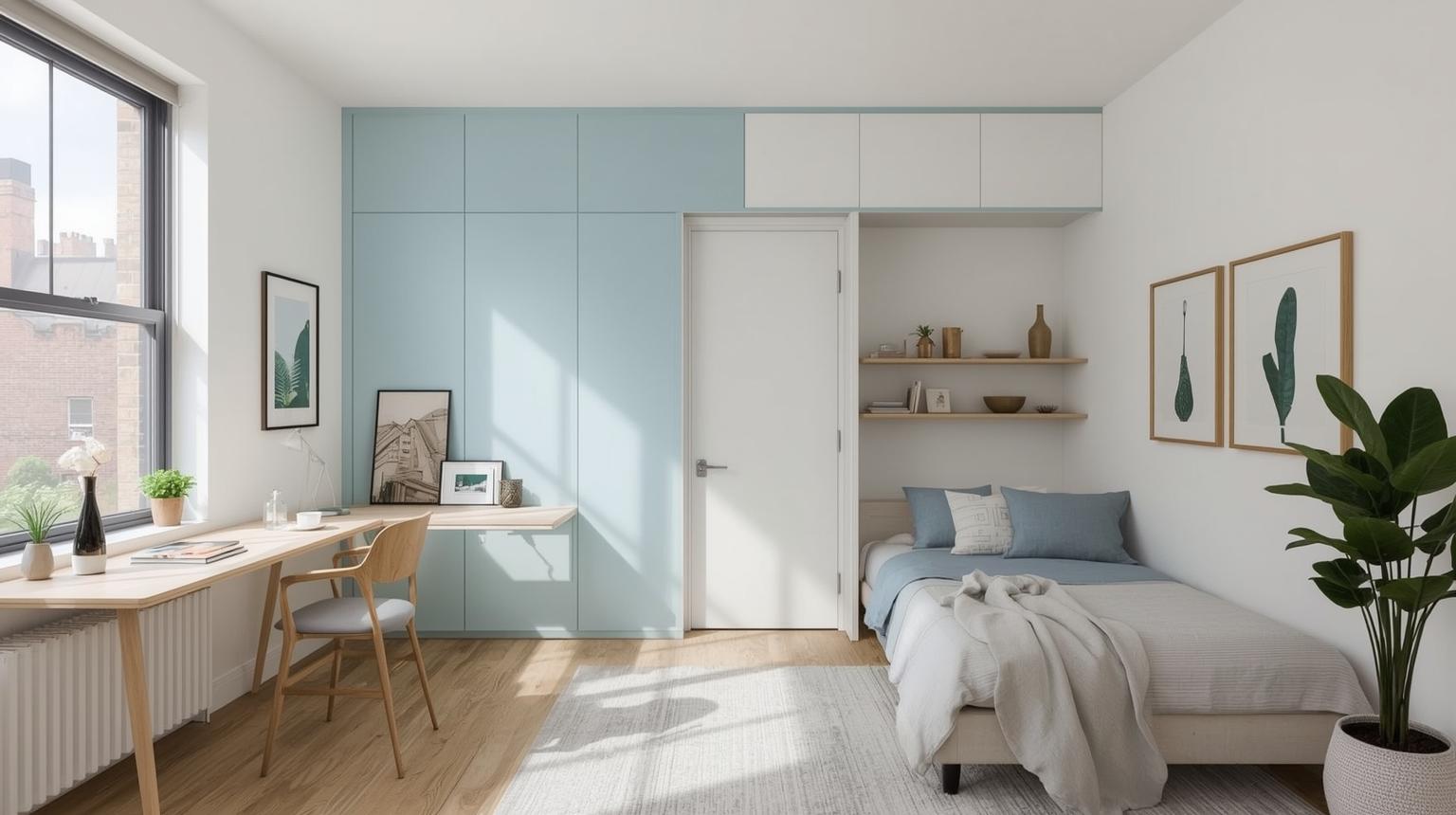
Maria faced every city dweller's nightmare: creating distinct living, working, and sleeping areas within 400 square feet of Brooklyn studio space. With just $2,000 and zero design experience, traditional solutions felt impossible.
Her breakthrough came through AI space planning. After uploading apartment photos, the system analyzed dimensions, natural light, and architectural constraints, generating twelve different layout options within minutes. Each one maximized perceived space while creating functional zones.
The AI recommended a murphy bed solution Maria hadn't considered, suggested a light blue and white color palette to enhance spaciousness, and identified multipurpose furniture serving double duty. Most importantly, it created a precise shopping list with specific product recommendations within budget.
Three weeks later, Maria's studio felt twice as large. "I never would have thought to angle my desk that way or use that corner for storage," she shared. "The AI saw possibilities I completely missed."
Total cost: $150 under budget. Estimated savings compared to hiring a designer: $3,000.
Case Study 2: Commercial Office Redesign
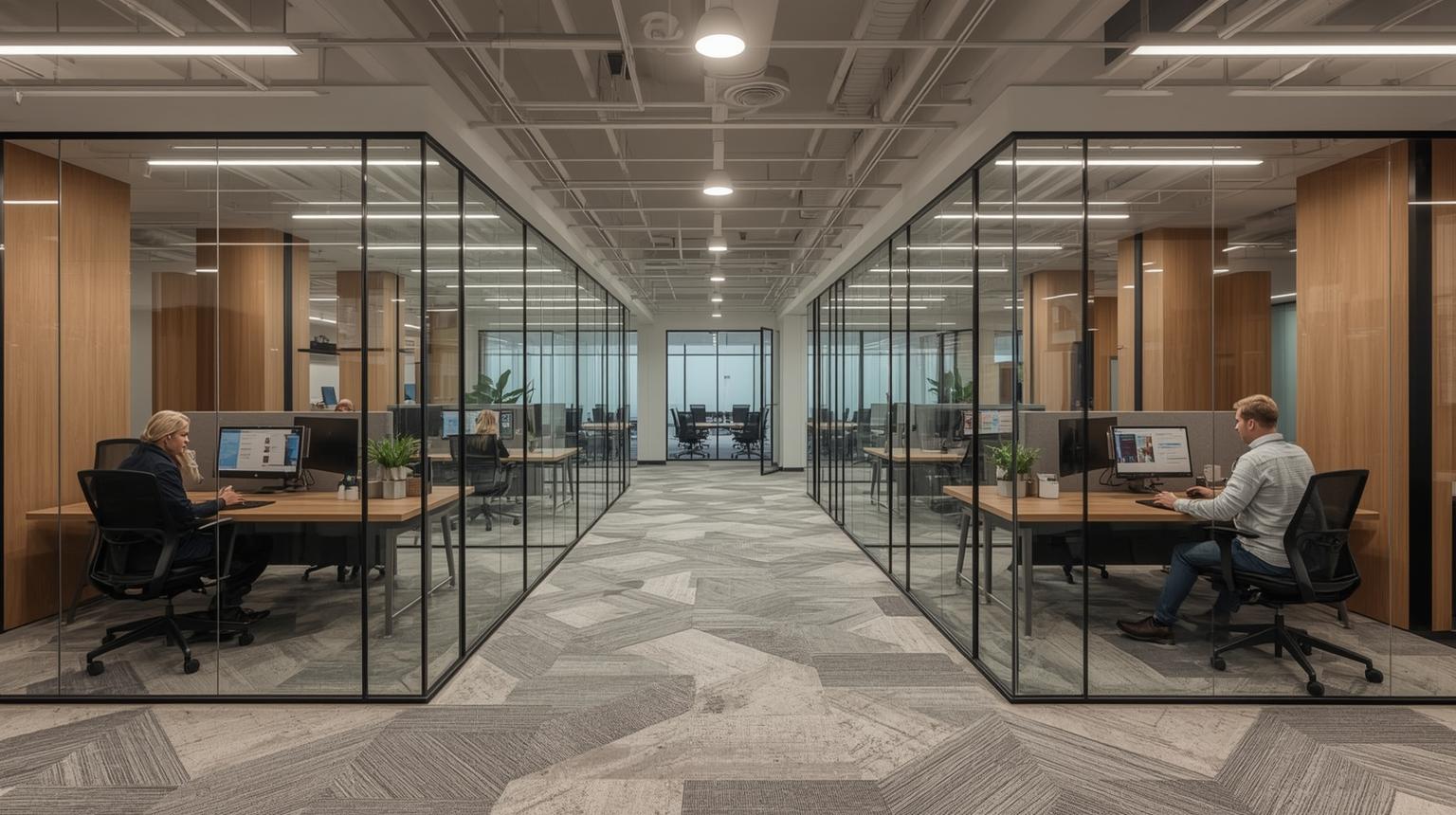
A tech startup needed their 5,000 square foot office reconfigured for hybrid work, accommodating both collaboration and remote work support-quickly and affordably.
Enterprise AI design software analyzed employee workflow patterns and collaboration needs, processing data about meeting frequencies, team sizes, and space utilization. The recommended layout balanced open collaboration areas with focused work zones.
The system suggested reducing dedicated desk space by 40%, replacing it with flexible workstations and enhanced collaboration areas. It recommended specific lighting configurations supporting video conferencing and acoustic treatments managing noise in open-plan spaces.
Six months later: 35% improvement in workspace satisfaction, increased meeting efficiency, and support for 25% team growth without additional square footage.
Spotlight: Paint.it AI - Design Like Creating a Playlist
While most AI design tools overwhelm users with complex interfaces, Paint.it AI takes a refreshingly simple approach-making interior design as intuitive as creating your favorite music playlist.
The Paint.it Difference
Paint.it AI operates on three core principles: Empathy (understanding your lifestyle needs rather than forcing templates), Intuitiveness (every function feels as simple as picking a song), and Seamlessness (everything happens in one continuous flow without re-uploading or switching tools).
Real-Time Design Magic
What sets Paint.it apart is instant transformation. Upload your room photo, scroll through curated styles like "Cozy Scandinavian" or "Industrial Loft," and watch changes happen in real-time. Want to swap wall colors or try different furniture? Each change appears instantly, letting you experiment fearlessly until finding your perfect look.
Beyond Personal Use
The platform serves diverse needs: homeowners test renovation ideas before investing, real estate agents provide virtual staging for better property presentations, and content creators generate eye-catching interiors for social media. This democratized approach makes professional-quality design accessible to everyone, regardless of experience or budget.
The Human-AI Collaboration Model
Here's something important: the best AI-assisted design projects happen when technology amplifies human creativity rather than replacing it.
AI excels at processing vast information quickly-analyzing thousands of design precedents, calculating optimal layouts, generating initial concepts. This computational power frees human designers for higher-level creative and strategic thinking.
But humans bring irreplaceable emotional intelligence. Understanding unspoken client needs, cultural sensitivities, and personal histories requires empathy and intuition that AI cannot replicate. The magic happens when these strengths combine.
Interior designers embracing AI report unexpected practice transformations. "AI handles tedious calculations and initial explorations," explains Sarah Chen, a San Francisco designer. "This gives me more time to understand clients and push creative boundaries. My designs are more innovative now because I'm not bogged down in mechanics."
Many designers find AI helps them serve clients they previously couldn't afford to work with, expanding access to professional design guidance while maintaining the human touch that makes spaces truly special.
The future isn't about choosing between human creativity and artificial intelligence-it's about harnessing both.
Overcoming AI Design Limitations
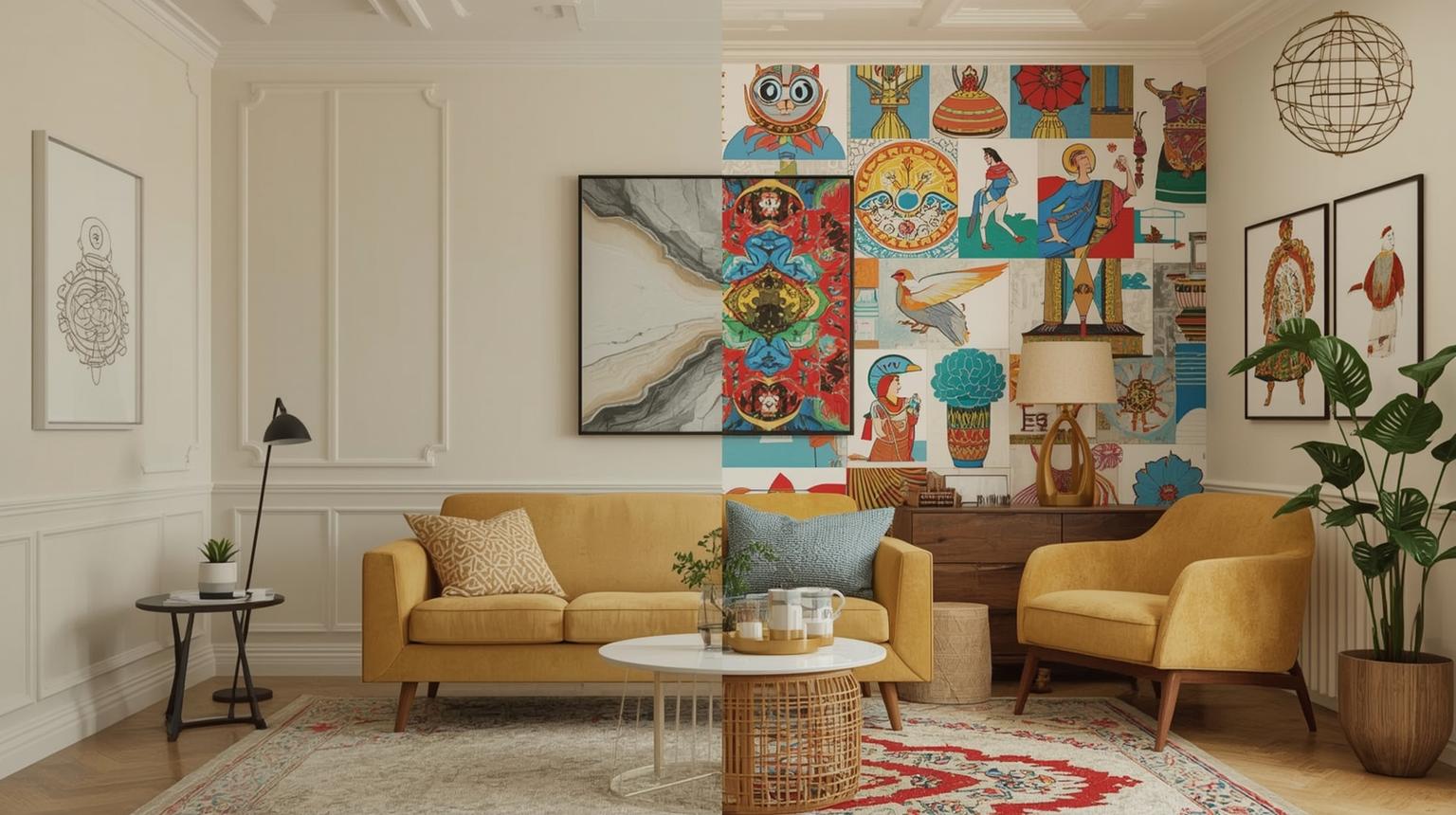
Let's be honest about where AI falls short. Understanding limitations helps achieve better results.
AI systems trained on popular trends may gravitate toward safe, generic solutions lacking personality. Algorithms might consistently recommend neutral palettes and conventional arrangements, missing opportunities for unique, characterful spaces reflecting individual personalities.
Cultural design preferences not well-represented in training data can be misunderstood or overlooked. Traditional elements, regional preferences, or cultural symbols might be inappropriate in AI recommendations. For instance, while AI might suggest generic modern luxury style interior design, it might miss the nuanced cultural elements that make a space truly meaningful.
While AI optimizes layouts within given parameters, it may not fully understand structural limitations, building codes, or practical constraints like HVAC placement, electrical limitations, or plumbing locations. These real-world factors often require human expertise.
Consider professional consultation when dealing with structural modifications, complex lighting design, unusual space configurations, or when emotional and cultural significance is paramount. AI works best for standard residential spaces with conventional needs and clear style preferences.
The key? Recognize these limitations upfront and use AI as a starting point rather than final solution for complex challenges.
Getting Started with AI Design
Ready to dive in? Here's your practical roadmap.
Practical First Steps
Start by identifying your primary goal. Quick room makeovers? Photo-based tools like RoomsGPT work beautifully. Detailed planning? Planner 5D offers comprehensive features. Color selection challenges? Paint.it AI provides focused expertise.
Prepare your space thoughtfully. Take high-quality photos in natural daylight when possible. Clear temporary clutter but leave permanent fixtures and furniture you're keeping. Measure accurately-most AI tools work better with precise dimensions than estimates.
Set realistic expectations. AI excels at generating ideas and solving common problems, but it's not magic. Expect to iterate on initial suggestions and apply your judgment to final decisions. The best results treat AI recommendations as starting points for refinement.
Budget-wise, many tools offer free tiers perfect for experimentation. Paid versions typically provide higher-quality renders, more style options, and advanced features. Budget $20-50 monthly for professional-grade tools-significantly less than traditional design consultation fees.
Start small with a single room to learn how AI design tools work before tackling larger projects. This approach helps you understand each platform's strengths and develop an effective workflow.
Future Horizons
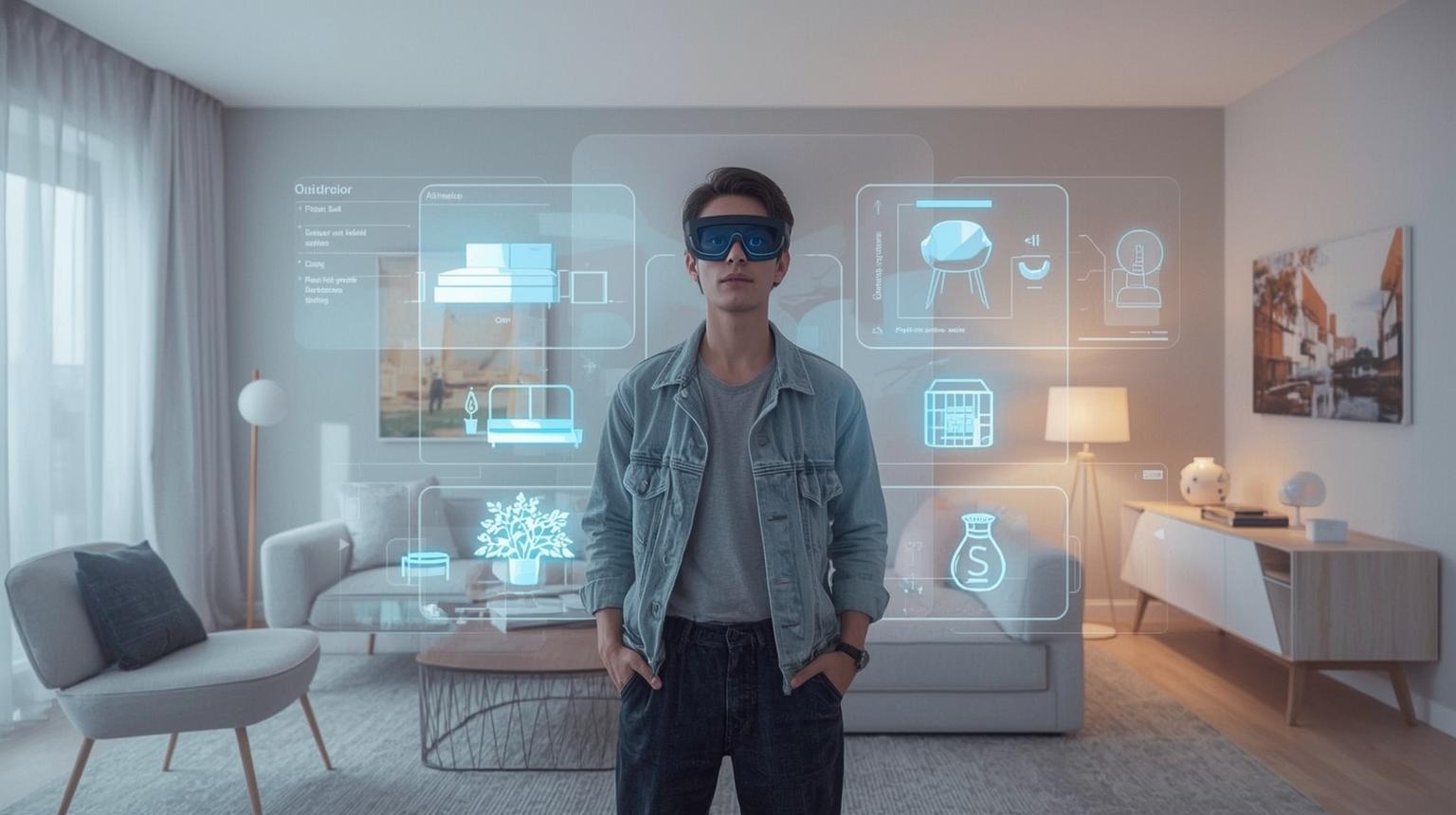
The AI interior design revolution is just beginning. What's coming next feels almost magical.
Future AI design tools will offer immersive experiences where you walk through redesigned spaces in virtual reality before making purchases. Augmented reality will show exactly how new furniture looks in your actual room with perfect scale and lighting, eliminating guesswork entirely.
Imagine describing your vision conversationally: "I want my bedroom to feel like a cozy cabin but with modern amenities." AI will translate natural language into specific design recommendations, making technology accessible to everyone.
Smart homes will provide AI with real-time data about how spaces are actually used, enabling designs that adapt automatically to changing needs. Your lighting, temperature, even furniture arrangement could adjust based on daily patterns and seasonal preferences.
AI will analyze social media, design publications, and purchasing patterns to predict emerging trends, helping both professionals and homeowners stay ahead of design curves. This predictive capability will be particularly valuable for commercial spaces and investment properties.
These developments point toward a future where AI doesn't just suggest designs-it creates living environments that continuously evolve and improve based on how we actually inhabit our spaces.
Making the Smart Choice
As AI continues transforming interior design, the opportunity to create beautiful, functional spaces has never been more accessible. Good design is no longer a luxury reserved for the affluent-it's becoming a standard everyone can achieve.
Your Design Journey Starts Here
Begin with a single room or specific challenge. This low-risk approach lets you learn how technology works while building confidence in your design decision-making abilities.
Use AI for technical and computational aspects-layout optimization, color coordination, product sourcing-while asserting your personal preferences and lifestyle needs. The final result should feel authentically yours.
The most successful AI-assisted projects happen when technology amplifies human creativity rather than replacing it. Let AI handle heavy lifting while you focus on emotional and personal elements making spaces truly special.
We're witnessing a fundamental shift in who has access to professional-quality interior design. AI technology breaks down barriers of cost, complexity, and expertise that traditionally limited good design to a privileged few.
Whether you're refreshing a single room, personalizing a rental space, or expanding your professional capabilities, AI interior design tools offer unprecedented opportunities to create spaces that are both beautiful and uniquely yours.

The future of interior design isn't about choosing between human creativity and artificial intelligence-it's about harnessing both to create spaces that better serve how we live, work, and express ourselves. That future is already here, waiting for you to discover it.
Have you been putting off that room makeover because it felt too overwhelming, too expensive, or too complicated? The barriers that once stood between you and your dream space are dissolving. Your perfect room is just a few clicks away, and honestly, there's never been a better time to start designing the space you've always wanted.
Ready to transform your space? The AI design revolution is happening now, and your dream room is waiting to be discovered.
Trending
Top 6 Homestyler Alternatives: Best Tools for Instant Interior Design
Preppy Bedroom Ideas: How to Master the New Traditionalism
Expert Review of AI Virtual Staging Platforms for Precise Furniture Selection
What Are the Best Spacely AI Alternatives?
The Future of Design 2030: How Agentic AI & Paintit.ai Will Transform Your Home
Related articles

9 min read
Interior Design Trends Winter 2025-2026 & H1 Forecast: The Era of Emotion
Discover the defining interior design trends for Winter 2025/2026. From Moody Palettes and Warm Minimalism to the explosion of Dopamine Decor, explore the forecast with Paintit.ai
Juliy Cherevko
CEO paintit.ai

9 min read
Top 6 Homestyler Alternatives: Best Tools for Instant Interior Design
Searching for Homestyler alternatives? We compare the 5 best tools of 2025. From complex manual modeling to instant AI design with Paintit.ai. Read the review.
Juliy Cherevko
CEO paintit.ai

7 min read
Preppy Bedroom Ideas: How to Master the New Traditionalism
Discover 15 trendy preppy bedroom ideas for 2025. Learn how to mix patterns, choose perfect preppy wall colors, and style iconic furniture
Juliy Cherevko
CEO paintit.ai

16 min read
Expert Review of AI Virtual Staging Platforms for Precise Furniture Selection
Compare AI virtual staging platforms focused on furniture style selection, customization features, pricing, speed, and usability for property design
Juliy Cherevko
CEO paintit.ai

6 min read
What Are the Best Spacely AI Alternatives?
s Spacely AI worth it? Discover the best alternatives for architects and agents. Detailed review of Paintit.ai, RoomGPT, and others
Juliy Cherevko
CEO paintit.ai

5 min read
The Future of Design 2030: How Agentic AI & Paintit.ai Will Transform Your Home
Tired of managing renovations? By 2030, Agentic AI will do it for you. Explore Paintit.ai’s vision for autonomous design and the Agent-to-Agent economy
Juliy Cherevko
CEO paintit.ai